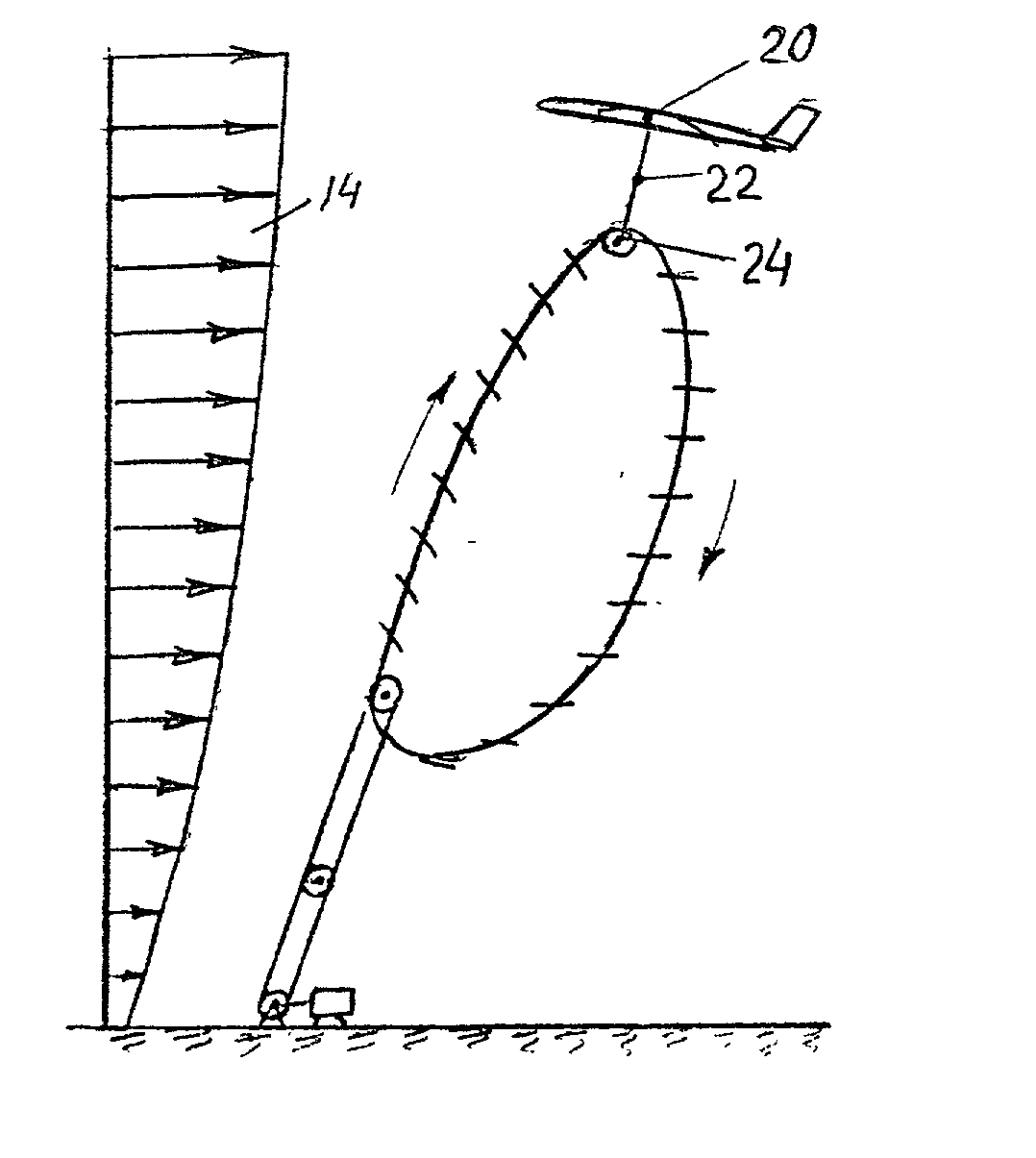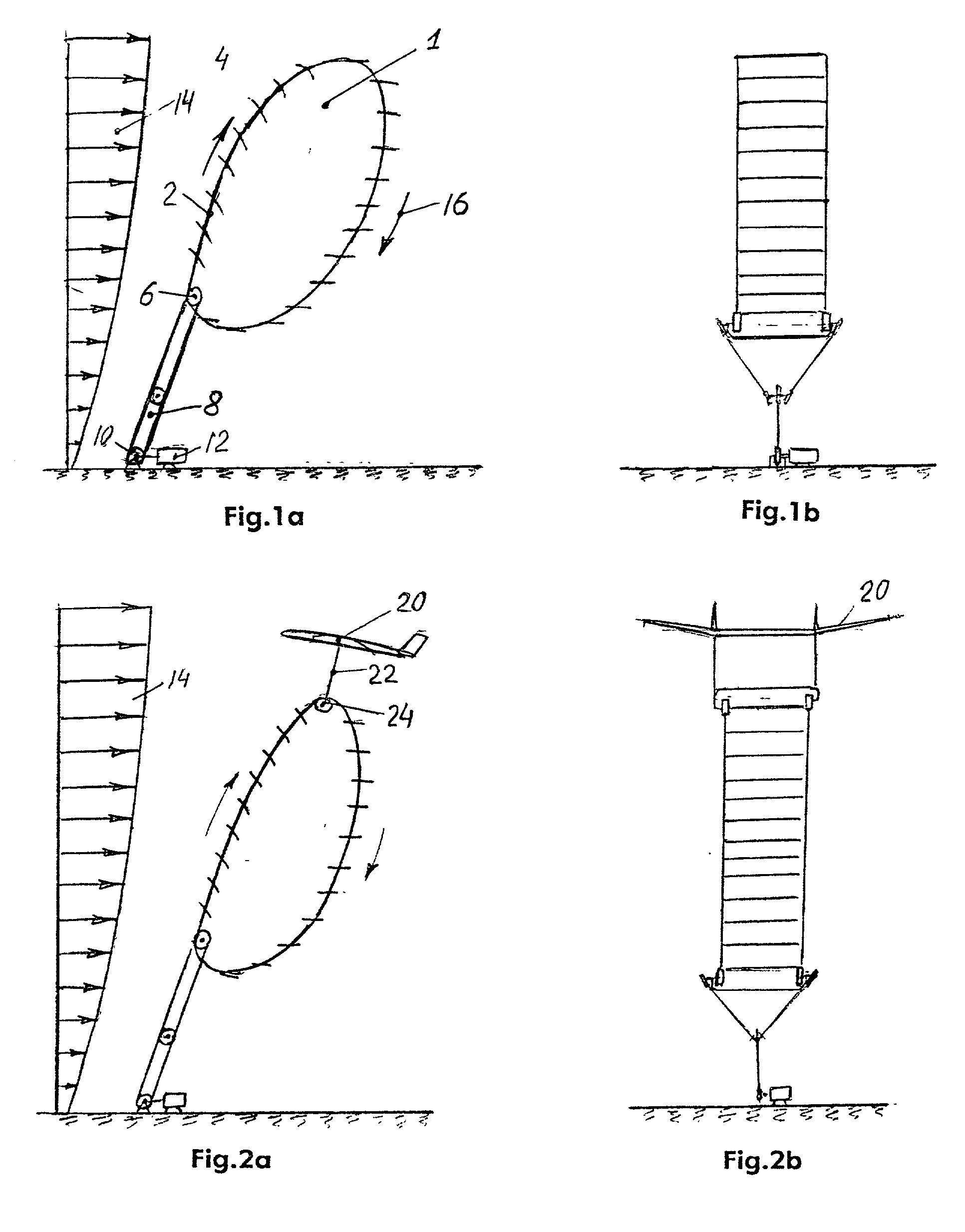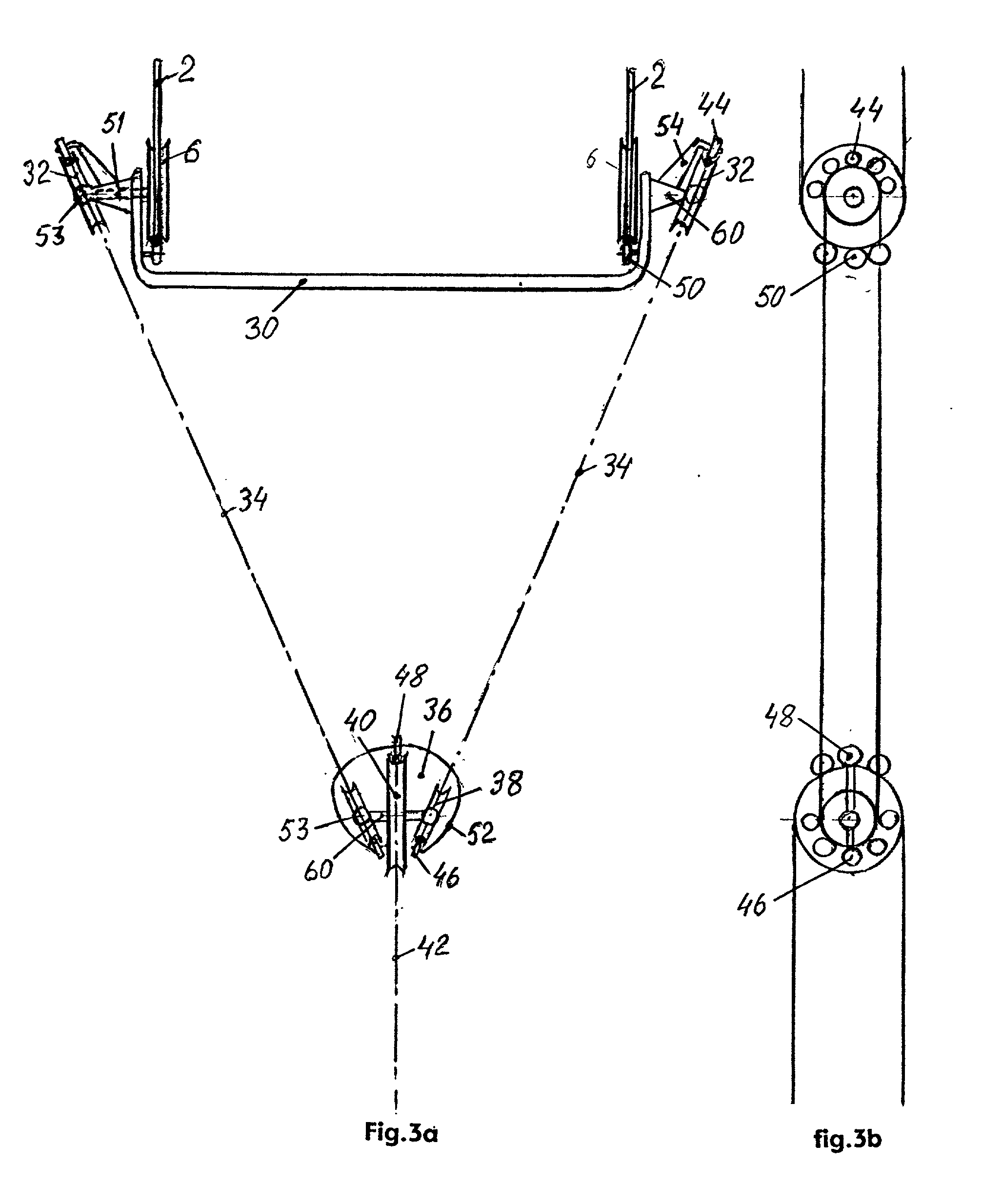Method of utilization a flow energy and power installation for it
a technology of flow energy and power installation, which is applied in the direction of machines/engines, toys, transportation and packaging, etc., can solve the problems of tidal power plants not being economically feasible as primary electricity sources, relative inefficiency, and small conversion of pumps
- Summary
- Abstract
- Description
- Claims
- Application Information
AI Technical Summary
Problems solved by technology
Method used
Image
Examples
Embodiment Construction
Method
[0128] The present invention relates, in general, to methods and facilities for the utilization of a flow (air, water) energy. The purpose is to dramatically increase the power capacity of a single installation and decrease the cost per unit of power. Author suggests use as a big flexible rope-blade free-flying rotor disposed at high altitude or in a stream of water (sea, ocean, river, etc.).
[0129] 1. A Method of Utilization of a flow (stream) energy, comprising the following steps:
[0130] (a) connecting lift-drag devices to a rotor;
[0131] (b) connecting said rotor to the ground, with a connecting rope;
[0132] (c) disposing energy conversion station at the Earth surface;
[0133] (d) connecting said rotor to said energy conversion station with rope transferor;
[0134] (e) disposing said rotor to work as a free-fly (free-float) rotor;
[0135] (f) transferring rotational energy from said rotor to said energy station-with said rope transferor;
[0136] (g) controlling the altitude and power ...
PUM
 Login to View More
Login to View More Abstract
Description
Claims
Application Information
 Login to View More
Login to View More - R&D
- Intellectual Property
- Life Sciences
- Materials
- Tech Scout
- Unparalleled Data Quality
- Higher Quality Content
- 60% Fewer Hallucinations
Browse by: Latest US Patents, China's latest patents, Technical Efficacy Thesaurus, Application Domain, Technology Topic, Popular Technical Reports.
© 2025 PatSnap. All rights reserved.Legal|Privacy policy|Modern Slavery Act Transparency Statement|Sitemap|About US| Contact US: help@patsnap.com



